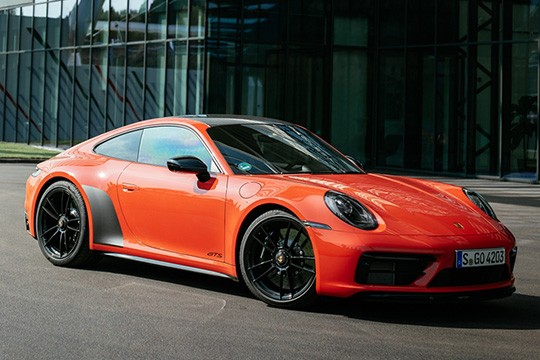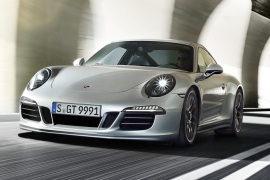PORSCHE 911 Carrera 4 GTS Models/Series Timeline, Specifications & Photos
First production year: 2014
Engines: Gasoline
Body style: Coupé (two-door)
After 12 years since the introduction of the GTS version in the Porsche 911 family, the German carmaker launched a new edition for the 992 generation.
In 2019 Porsche launched a new generation for its iconic 911 model, named 992. The plans were to make a GTS version in a year or so, but due to the pandemic situation that struck the world in 2020, those plans were postponed, and the GTS appeared on the market two and a half years later. Still, Porsche fans were patiently waiting for it since it represented one of the best price/performance versions in the 911 range.
On the outside, the carmaker did a few touches here and there to emphasize the differences between the GTS and the non-GTS versions. The LED headlights received darkened areas, while other black elements adorned the front side scoops, the splitter, rocker panels, and the front of the rear fenders.
Inside, the carmaker relied on the same instrument cluster with an analog tachometer in the middle flanked by digital screens as the rest of the 992 range. The PCM infotainment system provided connectivity with both Apple CarPlay and Android Auto, and its screen sat above the center stack. Also, black was the dominant interior color of the car.
Porsche built the 992 GTS with rear or all-wheel-drive, and in all three body versions: coupe, convertible, and Targa. The re-tuned flat-six engine provided 30 more ponies than the 911 Carrera S and the previous 921 GTS version.
For some people, the Porsche GT3 was too much to drive it on the road, but the Porsche Carrera 4S was too soft. So, in 2014, the German car-makers unveiled the bridge between those two: the Carrera 4 GTS Coupe.
Porsche 911 was on the market since the late '60s. It was the car that was on wall posters, computer wallpapers, screensavers, and smartphone backgrounds. It was a car built by enthusiasts for enthusiasts. Its overall shape didn't change that much since the first model appeared on the market. It grew in all sizes and it offered more and more power. When more and more race-tracks were opened for public and weekend races started to happened, more often, drivers started to look for more power and better cars. But not necessarily race cars, but cars with a racing pedigree that could have been driven on the roads.
Porsche was known as the “daily driver supercar”. It was true for most of its models. But then, some serious track-oriented cars appeared such as the GT3 or GT3 RS. But to drive one of those on public roads was harsh. The stiff suspension and almost completely stripped-out interiors didn't make them fit for a daily driver. The Carrera 4 GTS was built for regular roads, but it had some aces in its sleeve to handle a race-track. And, with its all-wheel-drive system, it was able to be driven on snow roads too.
Its appearance was different. The smoked bi-Xenon headlights lowered suspension, and its pop-up rear wing was part of a complete street and track package.

